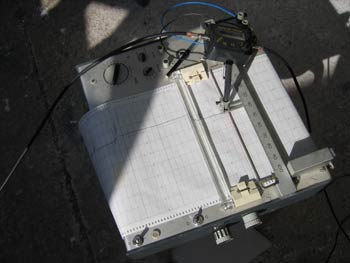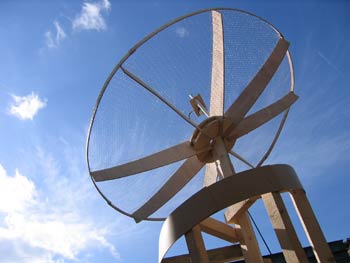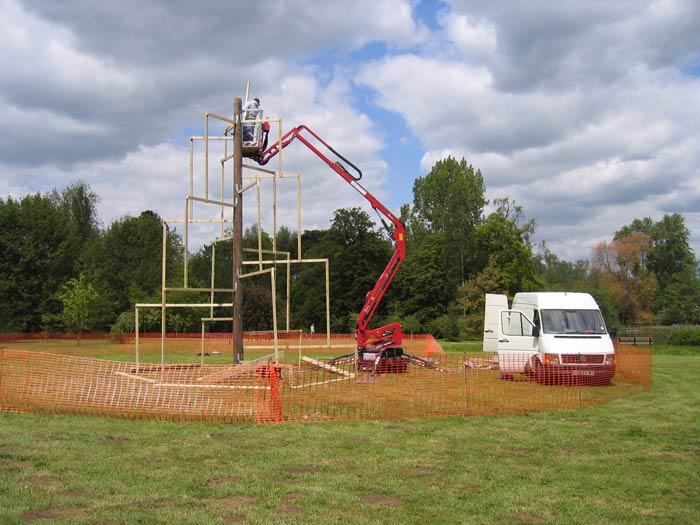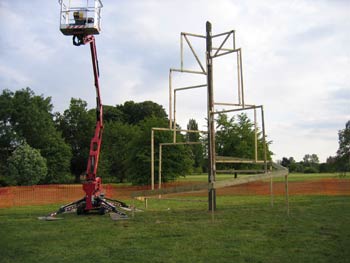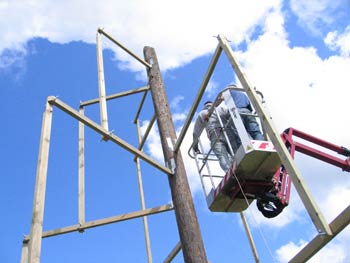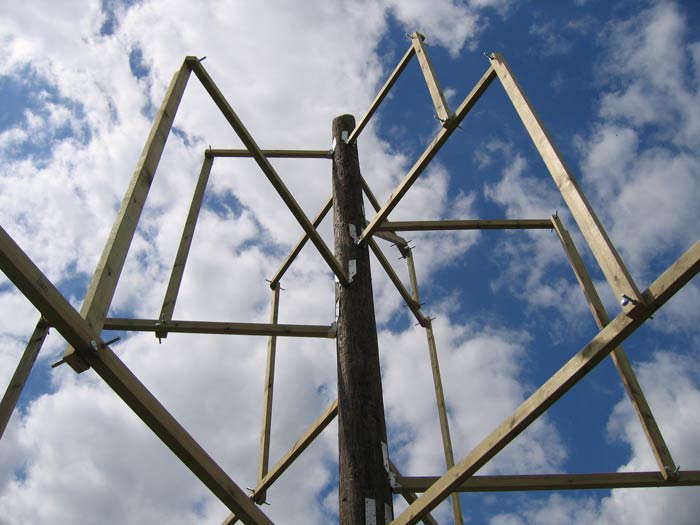May 31, 2005
whirlybirds

Q : What flies through the sky looking like the tower of babylon - well ok, a tadpole - with a spiral spinning around on top ?
A : M TEC arriving to fix a dodgy weld.
It's true - they landed a helicopter in University Parks to come and fix the steel supports from the dish. Now that's what you call service.
May 27, 2005
instant antiquity

The dish sat on its tower for a few brief instants before entropy acted with unexpected swiftness, a crack appearing in one of the supporting steel tubes. Bad workmanship (again) from the fabricators.
Like a statues head lying in the sands beside its body, the dish returned to earth to sit beside its tower.
. . . the dish will rise again . . . .
May 25, 2005
new map of the centre of the universe
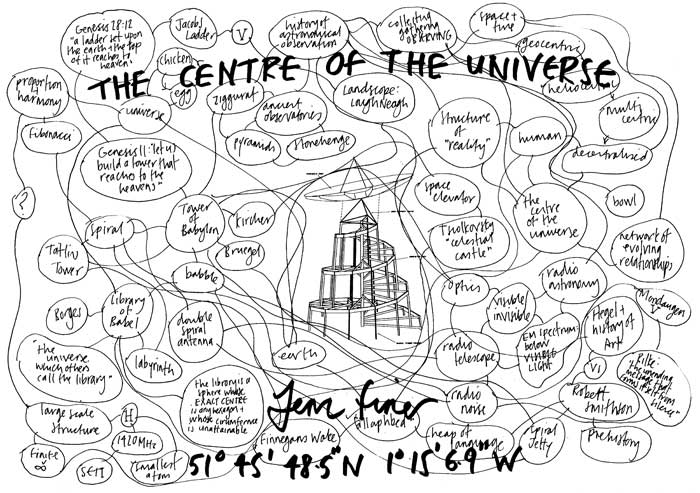
Oxford, University Parks : June 3rd - June 31st 2005
Trying to write a simple explanation as to what “The Centre of the Universe” is about I can only say this: there is no single answer.
There was a simple starting point, a clear and concise idea. Working in the Astrophysics department, one of my interests was radio astronomy, a point at which invisible information becomes tangible, an extension of our senses into wavelengths below the optical.
I decided I’d like to build a radio telescope out of found materials, out of wood and wire and old circuits. It seemed to me that when I talked to people about the subject they glazed over, as if I was suddenly talking in some strange new language. I wanted to show how simple, in essence, the idea of radio astronomy is and somehow to transform this interest into a sculptural form.
To think about the universe and our place within it I used to think one had to stick ones head into space and look around. Gradually it dawned on me that one need look no further than the passage of shadows across a room, the slow spinning of the night sky about the axis of Polaris, the heat of the sun. Slow learner. I came to the Astrophysics department to look into space and discovered the earth.
At some point it occurred to me to build the telescope as a union between historical extremes of astronomical observation; between an ancient observatory, in the form of a ziggurat, a spiral tower, and a radio dish.
Working outside offered the opportunity to make a direct connection between the telescopes location on earth and the universe at large. The tower, spiralling up towards the cosmos, the bowl a passive zen-like focus, waiting for a particle to fall, at the end of a journey across untold expanses of time and space. Detected by a blip on a screen, a burst of noise from a speaker.
From this clear, simple genesis new ideas and associations started to emerge, an expanding network of people and books, theories, histories, technology and architecture, the Tower of Babel, language, Finnegans Wake, the spiral, the topology of the universe, space elevators, labyrinths, the structure of reality. . . . all these and more lie entwined within “The Centre of the Universe”, among them things I have no idea of, to be discovered.
I have no desire in telling anyone a “truth”, a closed story. I am only interested in finding a thread, unpicking it . . . and watching a world unfold.
Everyone creates the universe according to their own experiences, their own observations. Everyone, every point, is the centre.
May 24, 2005
blow out
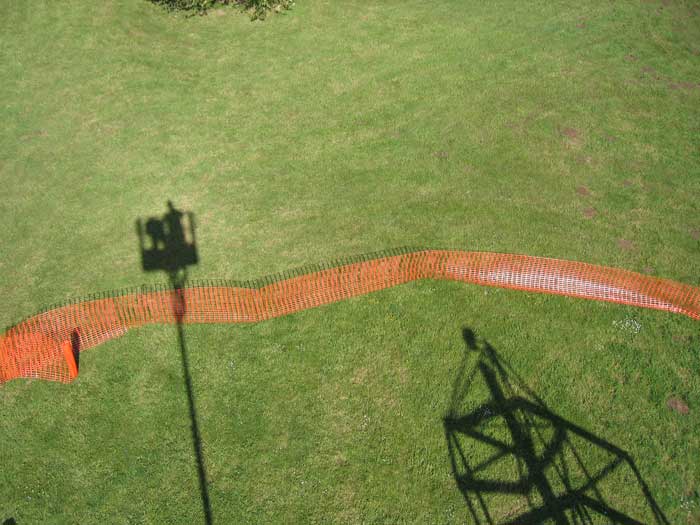
Today the crane was to come and lift the dish onto the tower. Too windy.
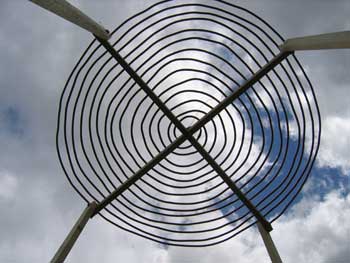
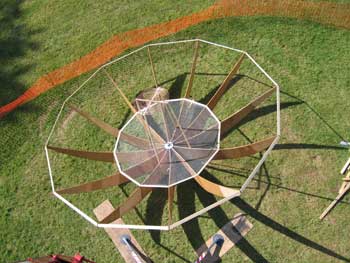
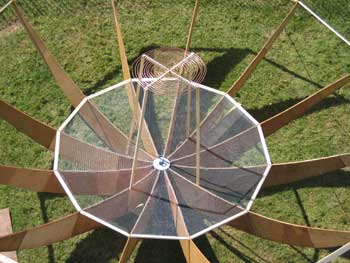
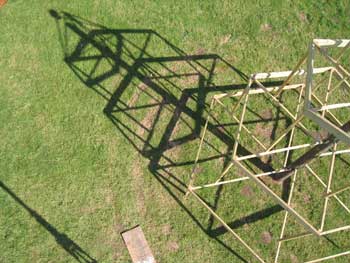

May 23, 2005
lucky 3
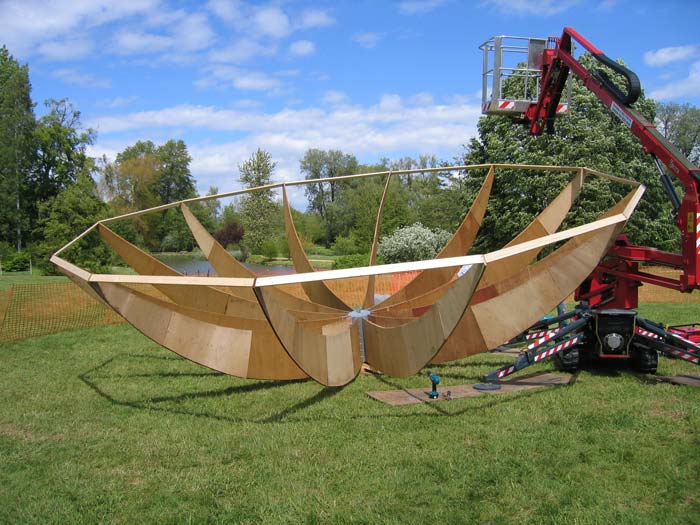
At the third time of trying we've made the dish.
#1 : metal rim disaster : though meant to be fabricated as a circle it arrived as an ellipse. We only discovered this when we'd put 3/4 of it on.
#2 : the ply circular rim disaster : not strong enough, went all wonky and eventually collapsed.
#3 : straight edges and braces. Why didn't we think of this in the first place.
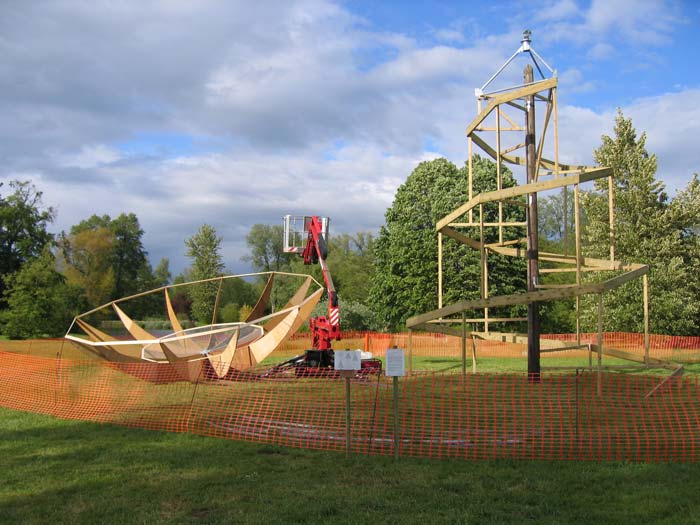
May 22, 2005
double spiral antenna

I've been trying to find out how to make one of these for months.
I first read about them - broadband double spiral antennas - in a book by William Lonc. The attraction, apart form the beautiful interlocked double spiral form, is that the antenna covers a wide range of frequencies.
The Lonc reference was tantalising. Despite searching high and low I couldn't find the details as to how to make one anywhere, until Mike Jones gave me the formula the other day.
It's a bit wonky. Quite hard to bend the copper pipe. Plus the pipe ran out 6 inches from the end.
May 21, 2005
shoot the weatherman

Just when you think it can't get any worse . . . it does.
Yesterday was rainy, today was apocalyptic, madder than a late winter Lough Neagh gale. Hail stones, twisters, thunder, lightning, downpour after downpour.
Slow progress.
One lady came by and asked if it was a giant mushroom.
May 20, 2005
non day
r a i n r a i n r
a i n r a i n r a
i n r a i n r a i
n r a i n r a i n
Actually that is very negative, a lot happened.
Marc Thomas abseiled up and down the tower and fixed the pyramid on top (upon which the dish will sit).
Mike Jones came and explained how to make a broadband spiral antenna.
The park filled with teenagers celebrating something (the last day of school ?).
They left the park and left all their rubbish strewn.
A duck came to visit us, waddling.
We (Marc, Ed McHenry and I) route marched accross town, bought wood, cut it in the Ruskin (thank you Simon) and brought it back in Ollies car.
The wood is the official solution to the non fitting metal ring of yesterday.
It rained a lot.

May 19, 2005
Sisyphus
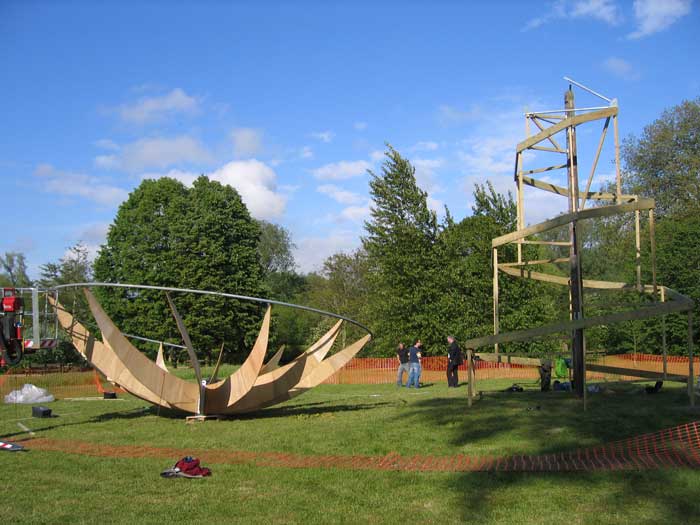
Nearly the last thing in the evening . . . . before we discovered the metal rim for the dish had been fabricated as an ellipse . . . and started to pull itself apart.
We spent the whole day making it and then had to take it all apart again . . . back to the drawing board.
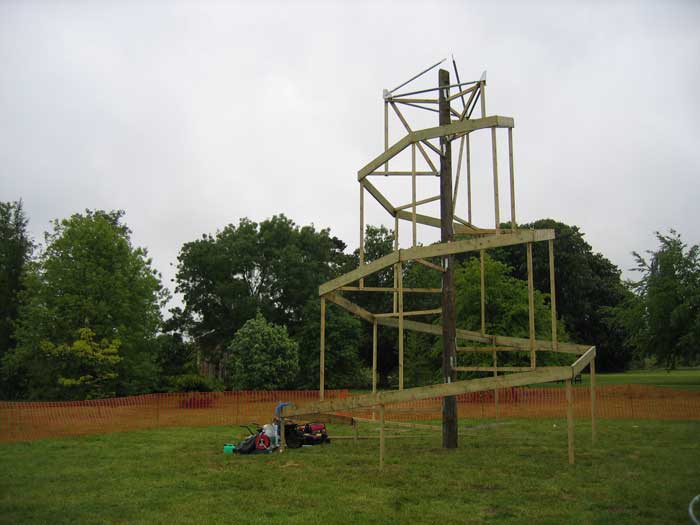
first thing in the morniing
May 18, 2005
Heliotrope
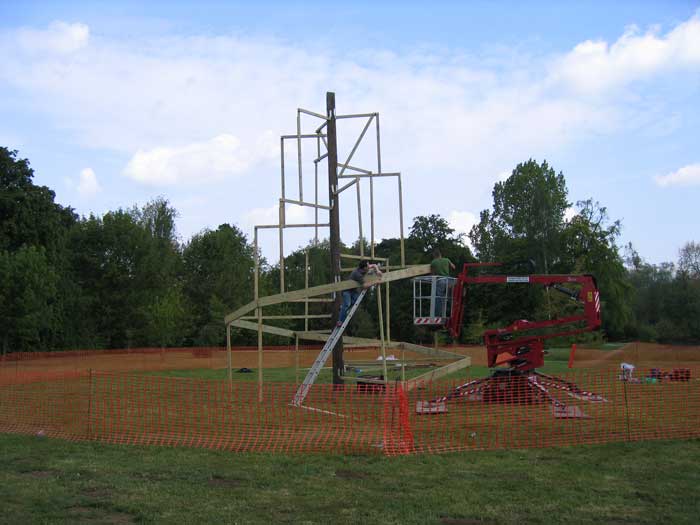
Now I spend most of my time in the park, I'm starting to think flowerwise. The drawing of the dish upon the telescope looks like a weird plant, tilted toward the sun, a heliotrope.
I'm annoyed not to have thought of this sooner. To have the dish, automated, follow the sun would have been a good idea. On a 24 hour cycle it would meet the sun rising in the east, track it across the sky to its setting in the west, and carry on around, under cover of darkness, to once again meet the dawn.
Another thing I wish I'd thought of : I'm trying to make the antenna for the dish in the form of a double spiral. So why not make it so big that it becomes the dish ? The dish and the antenna as one unified structure.
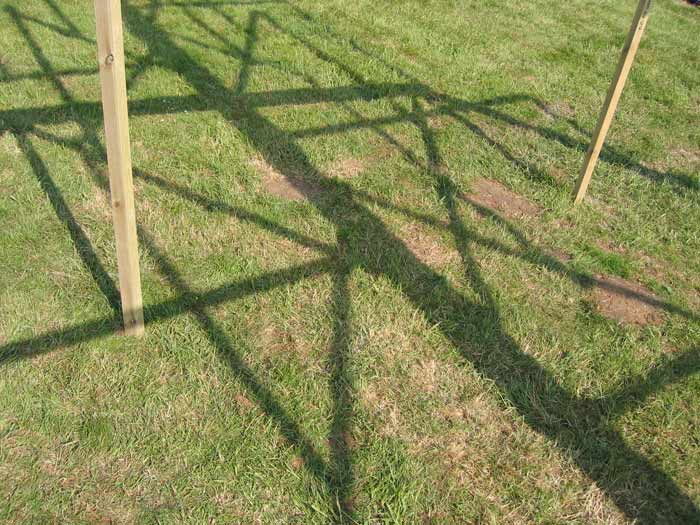
May 17, 2005
May 16, 2005
flat pack #2
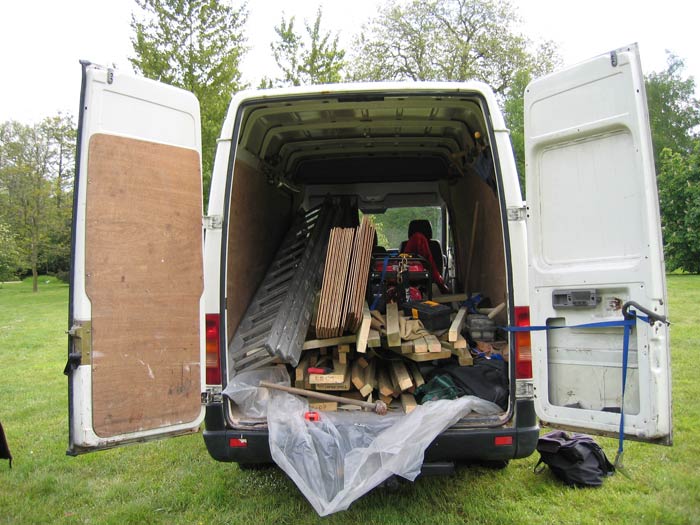
In the back of a white van, another flat pack delivery, an 8 meter high ziggurat topped off with a 7 meter dish.
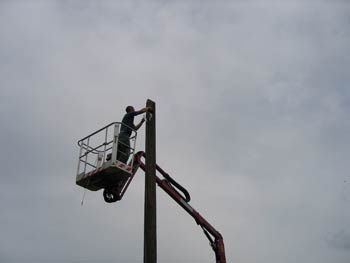
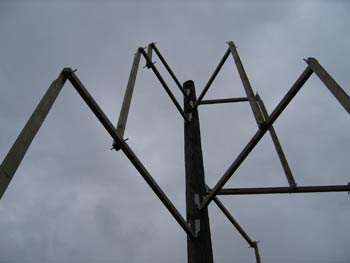
May 10, 2005
the centre of the centre

The centre of "The Centre of the Universe" is an 8 meter, 106 year old telegraph pole, now sitting snug in a 2 meter hole, bored into the earth, among the mole hills and wild flowers of the north eastern region of University Parks.
A blank totem, emerging from the soil, a line to the sky.
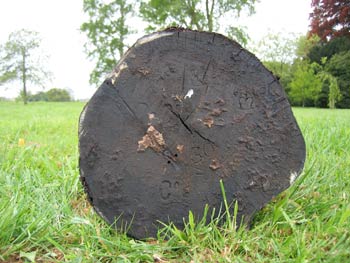
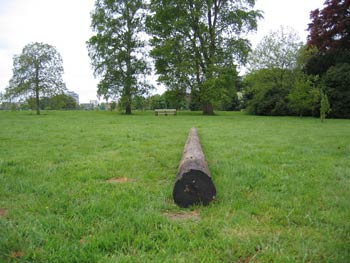
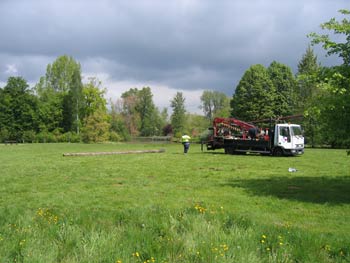
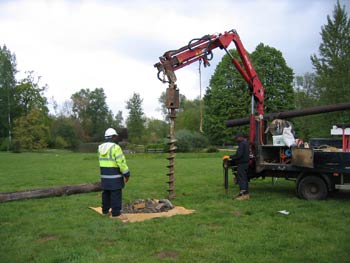
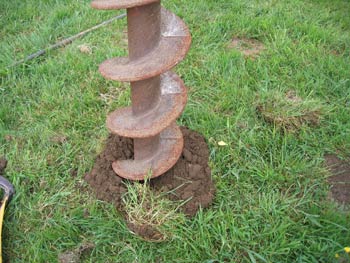
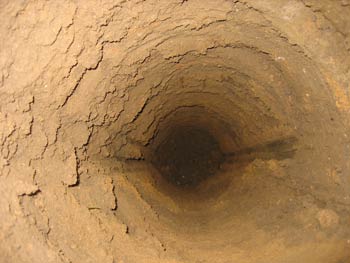
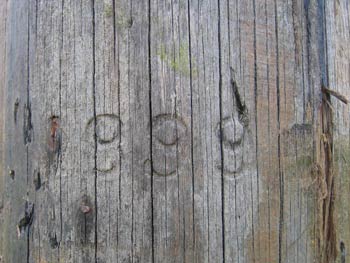
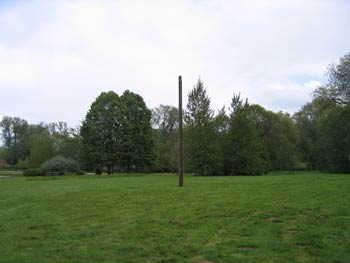
May 6, 2005
tuning into the sun on ku band
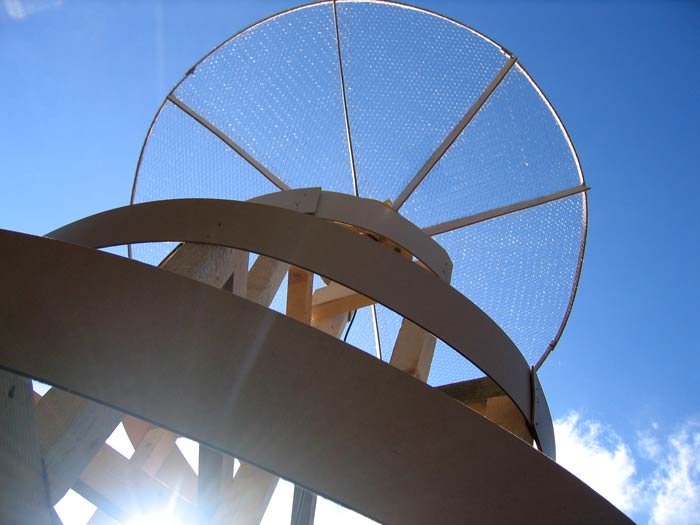
The prototype, now finished, observed the southern afternoon sky above Oxford for several hours. As the spin of the earth turned the focus toward the sun, the subtle variations of the chart recorder nib started to amplify, tracing the peaks and valleys of the solar ku band broadcast.
The simple radio telescope electronics were based on advice gleaned from a book by William Lonc. A ku band LNB and satellite receiver subverted to pick up any signals from space within its band width, their strength relayed to the chart recorder via a satellite signal strength meter inserted between the LNB and receiver.


